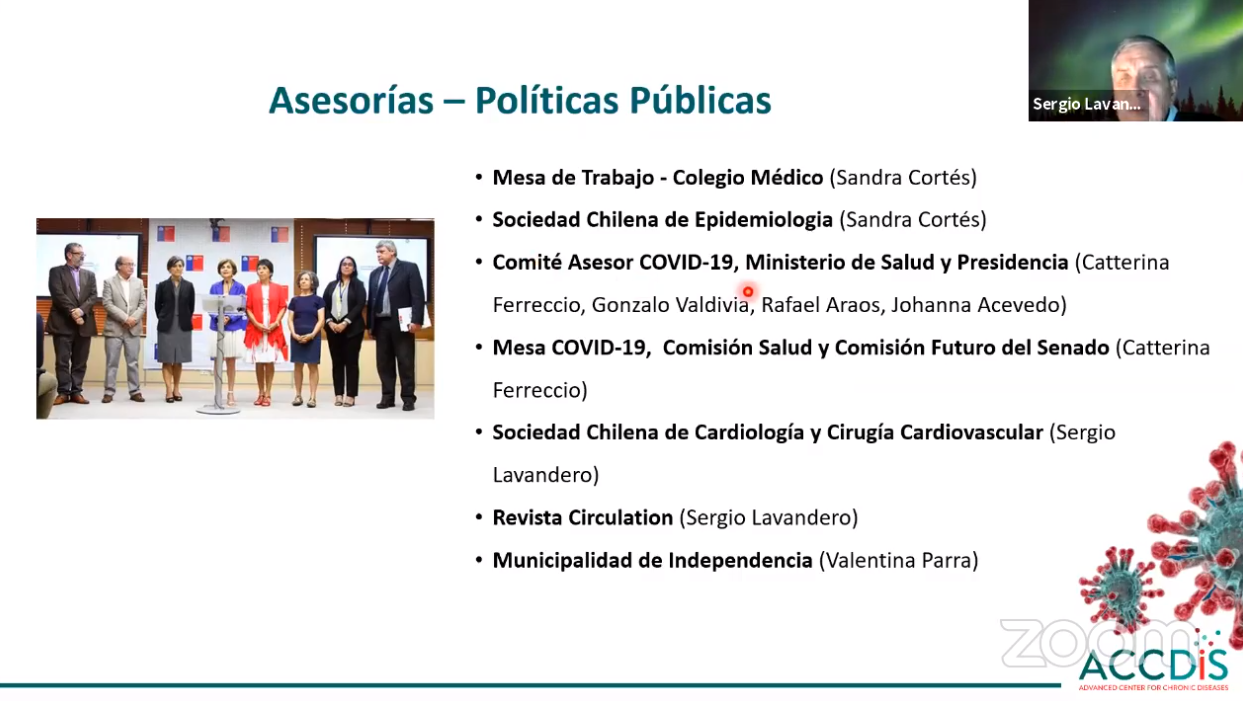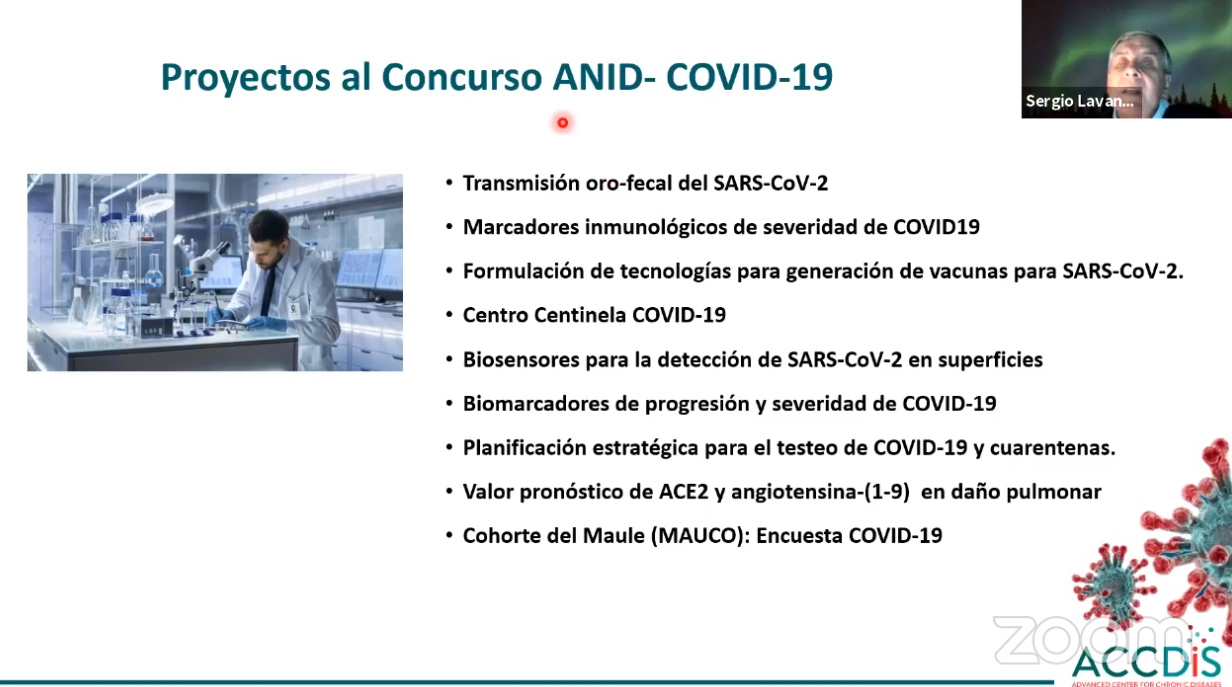How does SARS-COV2 enter and act in our body?
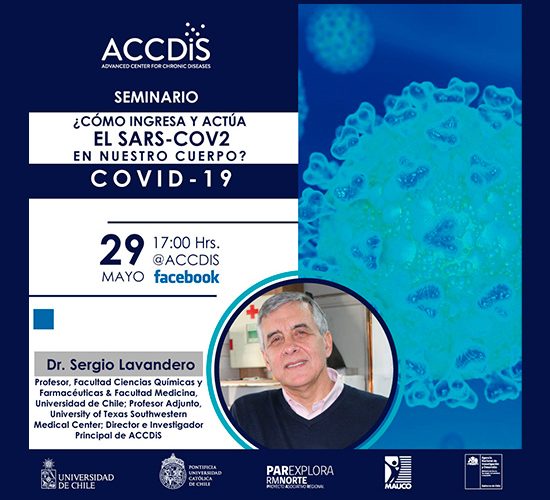
During the last seminar organized by the principal investigators of the Advanced Center for Chronic Diseases (ACCDIS), the director of the Center Sergio Lavandero, doctor of the Faculty of Chemical and Pharmaceutical Sciences & Faculty of Medicine of the University of Chile; also Adjunct Professor at the University of Texas UT Southwestern Medical Center, explained how SARS-COV2 enters and acts in our body.
Based on the analysis of these abbreviations, the academic explained that after the identification of COVID-19 in China, in January 2020, a research team from that same country isolated and characterized the organism responsible for this disease "resulting in a virus known as Severe Acute Respiratory Syndrome coranovirus-2 (acronym SARS-COV2). This virus causes the coronavirus disease 2019 (COVID-19) ”, reported Dr. Lavandero.
How does SARS-COV2 enter our body?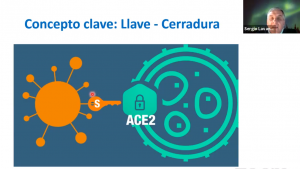
Faced with this concern that different people do, the professor pointed out through an illustration where the key is a protein of the virus called Spike and the lock of the entrance door to our cell is known as Angiotensin Converting Enzyme type 2, known by its acronym in English as ACE2.
"This enzyme is key to our cardiovascular system", it is responsible for generating two protective molecules that have opposite properties to angiotensin II (Ang II), the main regulator of our cardiovascular system. "If Ang II promotes an increase in blood pressure, these protective molecules perform the opposite effect, the same occurs with inflammation, fibrosis and cardiac hypertrophy." Therefore when ACE2 is destroyed, these protective molecules are not generated, explained Professor Lavandero.
A recent study published by the magazine Nature, shows that ACE2 is indeed the receptor for SARS-COV2, which raises the question of where are these receptors that allow the entry of the virus into humans. Dr. Lavandero responded, "Taking into consideration recent publications, these ACE2 receptors are abundant in the nasal mucosa, in the deepest part of our lung and in the intestine."
On the other hand, the professor also took the opportunity to address another of the most frequent doubts in society, Is it possible to generate antibody to COVID-19? To this, he replied that there are currently tests that measure the production of these protective antibodies, according to studies, after week 4 or 5 the generation of antibodies is observed.
Regarding treatments and possible vaccines to combat COVID-19, the ACCDIS principal investigator reviewed the most hopeful studies, highlighting one of the most promising vaccines published by the journal The Lancet, which showed in their preclinical trials that according to a preset dose for each case, they generated neutralizing or protective antibodies between 75 and 100% of the individuals.
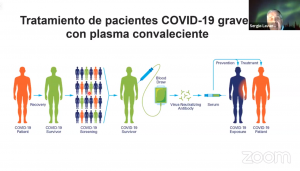 Another possible treatment is the use of convalescent plasma, that is, blood is taken from patients recovered from COVID-19, the neutralizing antibodies are separated and it is administered to prevent or treat seriously ill patients, "said Dr. Lavandero.
Another possible treatment is the use of convalescent plasma, that is, blood is taken from patients recovered from COVID-19, the neutralizing antibodies are separated and it is administered to prevent or treat seriously ill patients, "said Dr. Lavandero.
Antihypertensives and COVID-19
One of the controversies and uncertainties that arose in the midst of this pandemic is the use of antihypertensive drugs in patients with COVID-19, for which the cardiology expert emphasized "according to the latest studies published in The New England Journal of Medicine show that antihypertensive therapy should not be discontinued. Furthermore, it could even have protective effects against the coronavirus ”.
Along these lines, the professor reported on his recent scientific article "Renin-angiotensin counterregulatory system in cardiovascular diseases", published in the journal Nature Reviews Cardiology, carried out by researchers from ACCDIS and CENTHY -Center for new drugs for arterial hypertension- where they refer to angiotensin- (1-9) as a potent antihypertensive and anti-inflammatory in the cardiovascular system.
"These antecedents led us to consider the possibility that angiotensin- (1-9) and angiotensin- (1-7) could be used to prevent the damage caused by SARS-COV2 in the lungs", project submitted to the Agency's Competition Chile's National Research and Development Agency (ANID), Lavandero said.
Para finalizar el profesor señaló el aporte que está teniendo ACCDIS ante el COVID-19, informando que el Centro presentó 10 propuestas científicas al Concurso de CIVID de la ANID y también ha brindado asesorías de salud pública a entes gubernamentales e instituciones internacionales. Por otro lado, también destacó la contribución del Proyecto Asociativo Regional (PAR) Explora RM Norte, liderado por la Universidad de Chile a través de la Facultad de Ciencias Químicas y Farmacéuticas y ejecutado por el Centro, a través de charlas, actividades para docentes y apoderados, cápsulas informativas y otros materiales se han esforzado a pesar de las adversidades en continuar apoyando el desarrollo de una cultura científico-tecnológica en la comunidad escolar.


